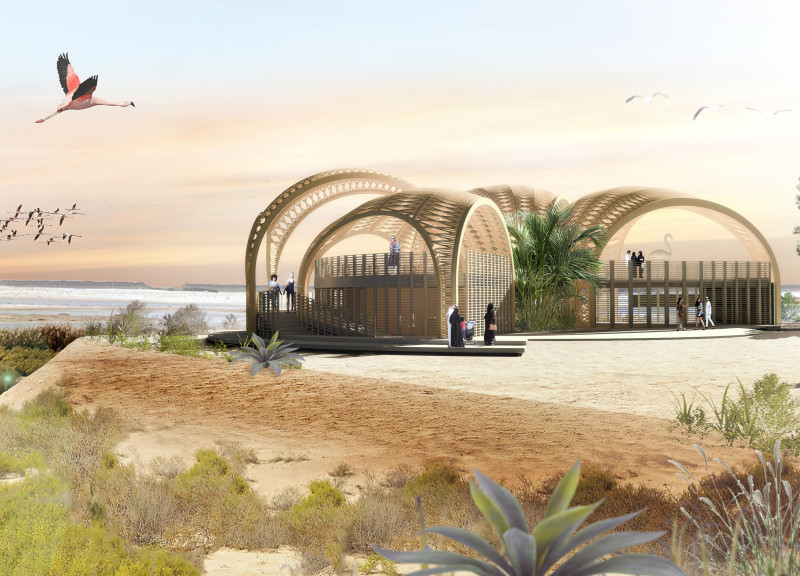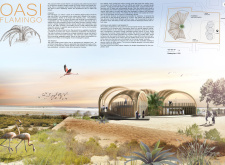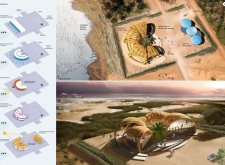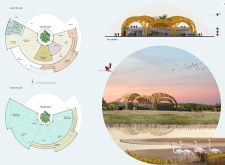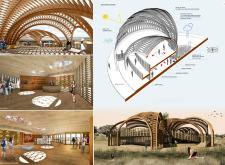5 key facts about this project
The project functions as more than just a functional space; it is designed to be an integral part of the surrounding landscape, emphasizing sustainability and ecological awareness. The thoughtful architecture aims to create an environment that invites visitors to explore and engage with nature while also providing educational opportunities about the importance of conservation.
Key components of the Oasi Flamingo include its unique structural form and materiality. The building features a series of flowing forms that reflect the organic nature of the local ecosystem. Broad, arching roofs made of glue-laminated timber create expansive interior spaces while allowing for the maximization of natural light. This choice of timber not only provides a warm aesthetic but also supports sustainability by utilizing renewable resources. Additionally, wooden screens strategically placed around the building provide necessary shade and ventilation, fostering a comfortable environment for both visitors and wildlife.
The integration of natural stone and concrete supports the facility’s structural integrity and enhances its connection to the landscape. These materials are used in areas where durability is paramount, ensuring that the architecture stands up to the elements while maintaining a low environmental footprint. The incorporation of solar panels aligns with the project's sustainability goals, generating energy on-site and teaching visitors about renewable solutions.
One of the standout features of the design is its interactive educational exhibits, which are distributed throughout the space. These installations serve to connect visitors with the ecological context of the wetlands, making the experience both informative and immersive. The project's layout encourages circulation from one exhibit to another, fostering a sense of community and a deeper understanding of the local habitat.
Additionally, the landscape surrounding the center has been carefully curated to include artificial oases that mimic the natural environments found in the wetlands. This not only enhances the aesthetic appeal of the area but also promotes biodiversity by attracting local wildlife. The outdoor terraces and viewing areas are thoughtfully positioned to maximize the experience of observing the wetlands and the diverse birdlife it supports.
The Oasi Flamingo stands as a testament to contemporary architectural practices that prioritize ecological sensitivity and community engagement. By merging innovative design approaches with a deep respect for nature, the project exemplifies how architecture can function as a catalyst for environmental awareness and preservation. The facility goes beyond its physical structure, serving as a platform for educating the public and fostering an appreciation for the delicate balance of the ecosystem.
For those interested in exploring the architectural intricacies further, reviewing the architectural plans, sections, designs, and ideas of Oasi Flamingo will provide a comprehensive insight into its innovative approach and design philosophy. Engaging with these elements will reveal how the project has been carefully crafted to resonate with its natural surroundings, demonstrating the symbiosis between architecture and nature in a meaningful way.


